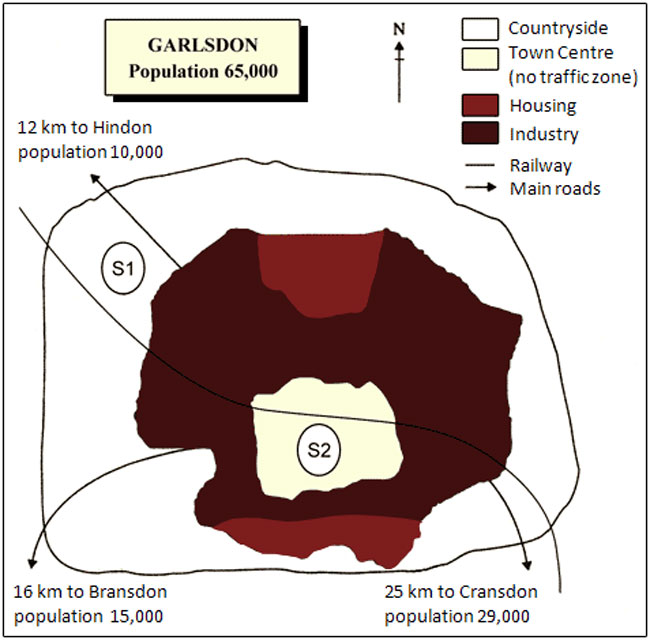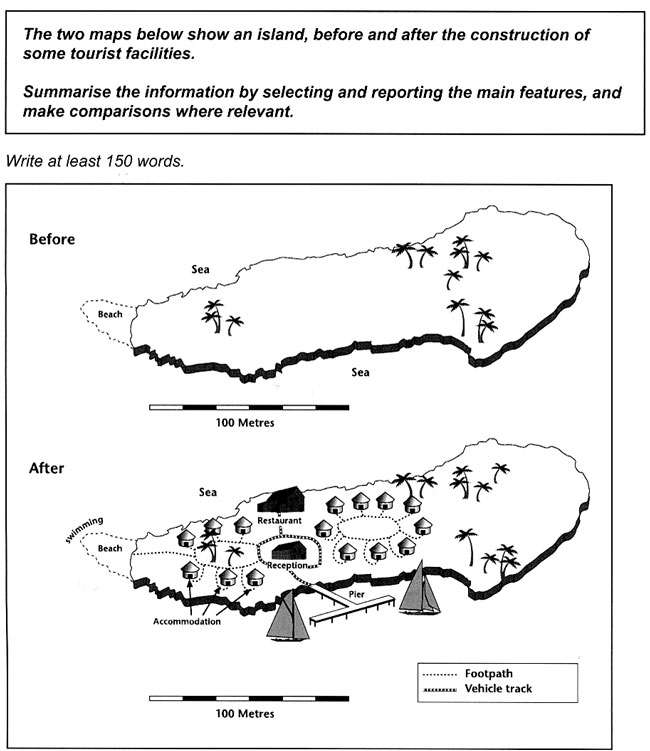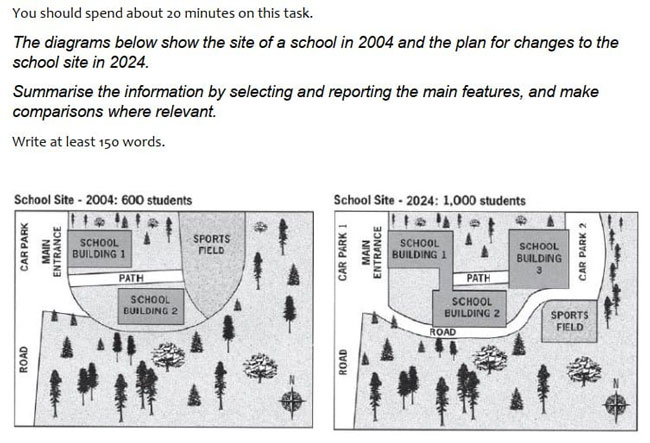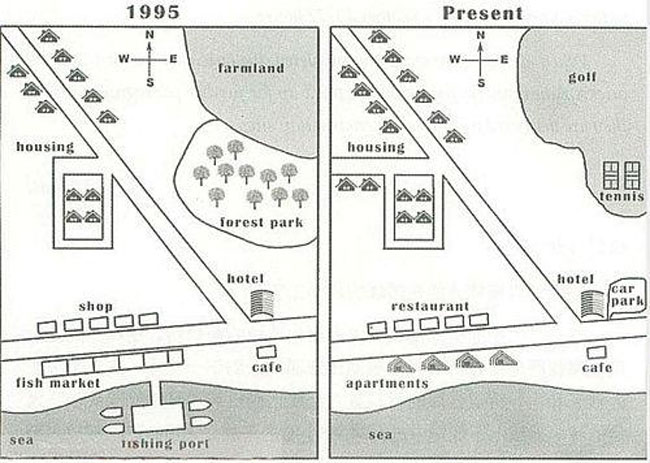How to dominate the IELTS writing task 1 map essay?
At the same time, you need to make the most of proper verb tenses to illustrate the improvements or changes of the objects on map. In this article, information on IELTS Writing Task 1 Map together with steps and tips will be provided for you to dominate this question type.
1. An overview of IELTS Writing Task 1 Map
Unlike other types of questions in IELTS Writing Task 1, IELTS Map has no figures or numbers to analyse. Instead, there will be one or more maps with features overtime that need to be written to illustrate the changes between the maps.
Generally, there are three typical kinds of map question including:
- One map in the present
- Two maps (one in the present and one in the future)
- Two maps (one in the past and one in the present)
To be specific, the first kind of map question hardly appears because it is impossible to make any comparison in only one map. The examiners normally focus on the other two types of map that requires you to combine the use of two different verb tenses. Whereas the second type of map asks you to use the present and future tenses to exhibit the development or transformation proposed in the future, the third type comes up most frequently and requires you to use the present and past tenses.
You will need to report main features and make comparisons of maps in approximately 20 minutes with 150 and over words on this IELTS Map essay. Appropriate vocabulary and grammar structures also need to be taken into consideration.
Following are some examples of IELTS Writing Task 1 Map:



If you are planning to take the IELTS, let’s start practicing with our free IELTS online test to get ready for your exam.
2. Structure of IELTS Writing Task 1 Map
Still followed the three-part structure, IELTS Writing Task 1 Map still includes four separate paragraphs:
2.1. Introduction
With the paraphrasing technique, you will rewrite the map question given in one or two sentences with these following information:
- Type of diagram (map)
- Main topic (the development of the village)
- Place (Ryemouth)
- Time period (between 1995 and present)
e.g. The map shows how a village called Ryemouth has developed over the last twenty-five years.
2.2. Overview
In one to three sentences only, you need to point out the general changes between the two maps. You can base on these questions to find out noticable differences:
- Are the changes dramatic or insignificant?
- Are there more or fewer residential areas on the map?
- Are there fewer or more trees?
- Are there fewer or more rural areas?
- Are there any noticeable improvements or developments in infrastructure?
- How have the buildings and leisure facilities changed?
e.g. There have been several changes, the most noticeable being the increases in accommodation, the elimination of the fishing industry, and the introduction of sports facilities.
2.3. Body
The body part should be divided into two different paragraphs. In each paragraph, you should write three to four sentences to outstand key changes or features in the maps given. You can group the information together depending on:
- Time (e.g. paragraph 1: map in the past; paragraph 2: map in the present)
- Location (e.g. paragraph 1: industrial areas; paragraph 2: residential areas)
Practice now: IELTS Writing Practice Test
3. Steps to score high in IELTS Writing Task 1 Map essay
3.1. Step 1: Analyse the map question
The general IELTS map questions will consist of:
- Description of the map
(e.g. The maps below show the village of Stokeford in 1930 and 2010.)
- Requirements
You should spend about 20 minutes on this task.
Summarise the information by selecting and reporting the main features, and make comparisons where relevant.
- Map(s)

3.2. Step 2: Point out key features and changes
These questions below may help you figure out main characteristics of the map:
- What is the time period?
- What are notable differences between the two maps?
- What are the unchanged features over the time period?
3.3. Step 3: Start to write the IELTS Writing Task 1 Map
Try to follow the structure of four different paragraphs:
- Paragraph 1: Introduction
- Paragraph 2: Overview
- Paragraph 3: 1st key features/changes
- Paragraph 4: 2nd key features/changes
4. Tips for IELTS Writing Task 1 Map
- Identify the tense you will use based on the dates given on the map
For example, one map is labelled in 1997 and another is in the present, this shows us the main tenses should be the past simple and present simple (or present perfect) tenses.
- Try to use both active and passive forms flexibly to describe the changes
- Make as many comparisons as possible to show the changes and differences between objects and maps
- Make use of proper vocabulary for the IELTS map such as describing positions, directions, changes, etc. You can refer to the sample template for Map IELTS Academic Writing Task 1 with vocabulary needed for your IELTS Map report
- Make sure you track your word count (more than 150 words) and time limit (around 20 minutes)
- Avoid personal points of view while reporting the Map
IELTS Map may be the easiest question type in IELTS Writing Task 1 if you assimilate enough knowledge and practice as much as you can. Also, learning from model sample answers can be a great choice among IELTS learners, and IELTS TEST PRO can be your ideal mobile app and website to learn and practice with manifold tests and blogs. Visit our website or download the app now!